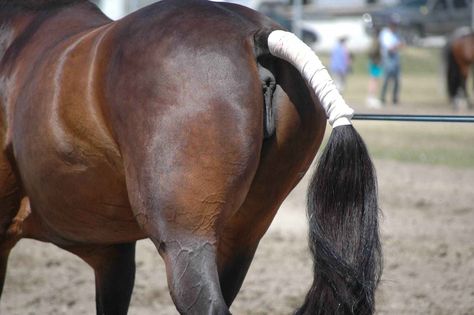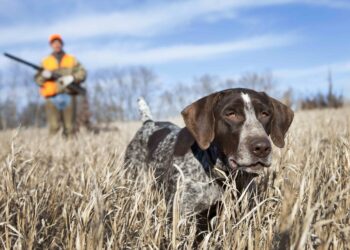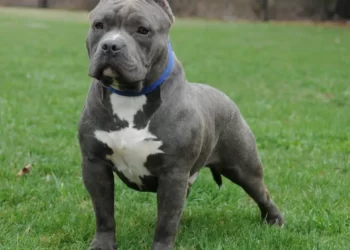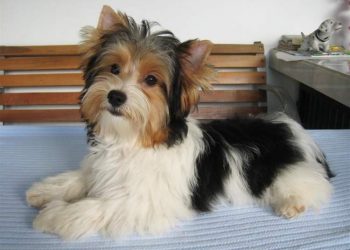There are some horse owners who do not notice that their mare is in heat, especially as some mares become more affectionate and let themselves be more easily ridden in this hormone-laden period. In that case, congratulations you are one of the lucky ones!
Because in general, if your mare is in heat, she often turns into a capricious and difficult little plague. We will answer all your questions about the heat of the mare, as well as the two essential questions that any new owner of mare comes to rest, how often is a mare in the heat? And how long does the heat last? Yes, because they have an end, luckily for you!
Read Also: 500 Horse Names For Male and Female Horse Names
What Is Heat In The Mare?
Heat is the period of the sexual cycle when a mare is ready to mate. During the rutting season, her body responds to the secretion of specific hormones, which will cause certain physical manifestations and changes in behavior during this period. Mares don’t have any blood loss (like women with menstruation). because their uterine lining does not develop until there is fertilization.
The Heat Cycle In The Mare
The mare will alternate between periods of heat in which she accepts mating (they are called estrus), and phases called interoestrus during which she refuses the stallion. Ovulation occurs during the estrus phase, ie during heat; an estrous cycle represents the time between two successive ovulations.
How Long Does The Heat Last?
The estrus cycle, that is to say, the heating phase, lasts on average 4 to 7 days. But this period can sometimes be much shorter (2 days minimum), or longer (15 days maximum), so that, if we take these extremes into account, the duration of heat of the mares effectively varies from 2 to 15 days.
At what time of year is the highest heat experienced in the Mare?
Mares have a seasonal ovarian cycle. This is a major difference with women who, for their part, go through cycles throughout the year, without there being any interruption during the winter period! This means that the mares will enter their cycles only during the beautiful days, from April to October.
Indeed, a foal born in winter in the middle of nature would have almost no chance of survival. However, Mother Nature is full of surprises, and some mares are exceptionally cycled all year round, including in autumn and winter. As a rule, therefore, the cycles start in early spring, and continue until summer, stopping in the fall.
How Does The Heat Start?
How is it that the mare goes into heat in April? Why not in the month of December? Quite simply, because the heat is triggered by an external stimulus, daylight. Indeed, the photoperiod, that is to say, the daily duration of light will activate the mare’s sexual cycles through the retina.
In early spring, when the days get longer, the heat must set in before becoming regular. Well regulated and regular between April and June, the heat will begin to decline from August, the brightness decreases.
Nature has thus designed a break in autumn and winter, so that the foals are born, after eleven months of gestation, for the grazing season. This pause is even more pronounced in ponies. However, the duration of this break varies greatly from one mare to another.
Reading Suggestion: 6 Best Horse Clippers For Body Clipping
How Long Do Mares Stay In Heat?
The mare’s ovarian cycle is on average 21 to 22 days.
This, therefore, means that your mare goes into heat every three to four weeks and remains in this phase for 4 to 7 days as explained above. A mare will therefore have an average of seven heat cycles per year.
At What Age Do Mare Get Their First Heat?
Young mares generally have their first heat between 12 and 18 months.
But even here there are exceptions, and some mares may already be covered before they reach the age of one.
By way of comparison, the stallions reach sexual maturity between the 12th and the 20th month. However, in rare cases, a stallion can reproduce at the age of 9 months.
How To Improve The Heat Of A Mare?
As light has a decisive influence on the sexual cycle, artificial lighting can therefore stimulate the activity of the ovaries. This is why, in the world of racing, the mares are put under a lamp, so that the foals are born earlier in the year. By leaving the light on 16 hours a day, the heat starts earlier.
Heat In The Mare: Until What Age It Occurs?
Heat cycles in mares typically begin when a mare reaches sexual maturity, which is typically between the ages of 2 and Heat cycles can continue until a mare is in her late teens or early twenties.
Reading Suggestion: Top 7 Best Horse Brushes to Keep Your Horses Clean
How To Detect The Heat Of A Mare?
As an owner, you need to be able to recognize the signs that your mare is ready to accept a stallion and be served. There are certain signs that are not mistaken and will put you on the trail.
You may be familiar with the “barre test” (also called “passing to the barre”) method, in which a mare is presented to a stallion while being separated by a partition. This method does not require any specific equipment, but just requires a little experience in order to discern the signs of heat.
Signs Of Mare In Heat
First, you will notice that the mare often stands still with her hind legs spread, in a pitched position, especially when a gelding or stallion is nearby. In doing so, she lifts the tail more often than usual and puts it to the side.
You will usually observe during this period, at the corner of the vulva, a discharge of mucus mixed with urine, of a characteristic whitish-yellow color, which you can sometimes find on the inner side of the thighs. Other signs such as jets of urine and a “blinking” of the vulva are characteristic of a mare in heat. The mare in the heat is sometimes called “the masseuse”, and insiders know that when “the masseuse” is back, the time for heat has arrived!
In addition, the mare is generally more nervous than usual: she neighs and urinates more often. When you ride her, she will also seem more temperamental, more irritable, and more sensitive. And under the saddle, it will be much more sticky.
Behavior During The Refusal Phase Of The Male
Once the first 4 to 7 days of heat (corresponding to the male acceptance phase) has passed, the mare will become much calmer again: ovulation has taken place, and she enters the male refusal phase. This period generally lasts 15 days (between 14 and 16 days).
So, if a stallion gets too close to her, she’ll put her ears back, “squeal”, flap her tail in the air, and if that’s not enough, kick! Usually, the message is clear. These behavioral signs will allow you to know that she is out of the acceptance period: it will then be a question of stopping the matings.
Variable Behavior Depending On The Mare
There is, however, no valid universal rule. Sometimes, a mare in heat will instead be more cuddly and affectionate than normal. Also keep in mind that for some mares these signs are clear, while for others the heat is much quieter and you will have trouble discerning the signs, as the differences in behavior are minimal compared to Usually.
In highly trained horses, the heat is often barely noticeable: the energy is needed elsewhere, the body in a way puts reproduction on the back burner. Otherwise, stress also unbalances some mares.
Precautions With The Mare In Heat
Most can still be mounted, and do not pose particular problems on a daily basis. In addition, the mare in heat does not need special feeding or special care. However, certain precautions must be observed during this specific period.
Keep Her Away From Stallions
Mares in heat trigger very marked sexual behavior in most stallions. They get excited and may, trying to approach the mare, injure you, or endanger other people, as well as other horses nearby. It is common that an inexperienced rider does not know how to control his stallion in such a situation, and loses control.
Additionally, mares in heat often tend to be irritable or to offer themselves up when horses or a stallion run too close behind them. It is advisable to keep your distance and to inform the other riders on the track. So a word of advice, keep your mare in heat away from stallions, unless you want to make it possible to cover your mare with a particular stallion, of course!
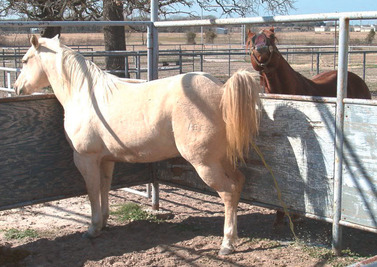
Be Considerate During Care And Tacking
Mares are very sensitive to their heat and are often difficult during riding. This is a time when you have to be careful with your mare, and be very patient with her. If it must be ridden during this phase, be sure to saddle it slowly and carefully, avoiding any sudden movements and hurting it, especially in the stomach area. If she feels the need to take a break and look around in the stable as you lead her outside, let her.
Be Careful If She Is In Contact With Other Horses
Horses generally have a typical behavior when they greet another horse. They sniff, squeal and hit the ground with their forelegs. This behavior can be particularly marked in the mare in heat. Therefore, avoid standing within reach of her front legs when she is sniffing another horse. In addition, some riders have noticed that a mare in the heat is more aggressive than other mares.
Many mares in heat also lose more urine. This is why it is often advisable in the stables, to make the mare pass quickly in front of the boxes of the other horses: you thus avoid her urinating at the stop and then having to clean the corridor of the stable.
Gentle During The Ride
If your mare stays still, as if stuck when you ride her or refuse to move forward, speak to her in a soft voice rather than pushing her forcefully with the thighs. Young mares react more noticeably being inexperienced in the matter, while older mares will be more relaxed in this kind of situation.
In winter or during cooler temperatures, they often need a warm blanket on their back and stomach. And if you have the impression that your mare is struggling or in too much pain from her heat, ask your vet for advice, as there are ways to reduce the symptoms.
Cut The Heat Of A Mare
Some mares have very aggressive behavior and become real pests in everyday life, or during breeding. For the most part, these mares rebel against the rider’s thigh movements, refuse to advance or are nervous or distracted.
In a professional equestrian sport, in particular, means are more and more often used on mares in extremely marked heat, or continuous, in order to prevent their occurrence and to obtain better sporting performance.
There are different ways to prevent heat in the mare: hormonal treatment, immunization, medicinal plants, or even through the use of homeopathy (its results are in question), as well as surgery (removal of the ovary).
Keep in mind that heat is a natural process in the mare and that it is advisable to resort to methods, especially those with irreversible consequences, only if you have no other means, or the situation really justifies it. Try to accept your mare for who she is, even in these difficult times.
Frequently Asked Questions:
Can Pregnant Mare Show Signs Of Heat?
It may sound strange, but even pregnant mares can get their heat. Of course, there is no ovulation when the mare is full, but follicles that secrete sex hormones continue to mature, especially early in gestation.
Be careful, however, heat could also be a sign of cessation of gestation. This is why in such a case we advise you to contact your veterinarian to confirm that everything is in order during the current gestation.
Can I Ride My Mare When She Is In Heat?
No, you should not ride your mare when she is in heat. Riding a mare when she is in heat can be uncomfortable and even dangerous for both the rider and the horse. It can also cause behavioral issues as the mare may become distracted.?


